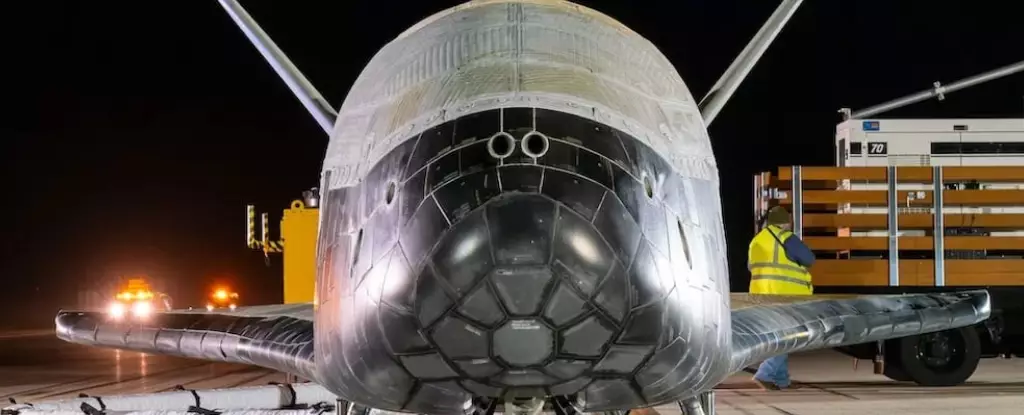The X-37B, a groundbreaking initiative of the US Space Force, represents a significant leap in aerospace technology. This versatile, robotic space plane, measuring just under 9 meters in length, evokes the nostalgic imagery of the space shuttle era while boasting capabilities suited for contemporary challenges. Its uncrewed design allows it to operate for extended periods in low Earth orbit, transcending traditional space vehicle functionalities. With its vertical launch and horizontal landing abilities, the X-37B has carved out a niche as a crucial tool for testing the future of aerospace technologies.
Origin and Evolution: From NASA to Space Force
Originally envisioned during the late 1990s by NASA, the X-37B was designed to probe the possibilities of reusable spaceplane technologies. This ambitious project initially showcased a collaborative spirit among major players, including NASA, Boeing, and the US Department of Defense. However, its trajectory shifted in 2004 when it transitioned to military oversight under the US Air Force, morphing into a strategic asset tailored for defense purposes. This evolution reflects a broader trend where civilian innovations find their way into military applications, a testament to the dual-use nature of space technology.
Classified Missions: A Veil of Secrecy
While the specifics of the X-37B’s missions remain shrouded in secrecy, the Space Force has acknowledged its role in pioneering several advanced technologies. From testing new thermal protection materials to developing guidance systems, the X-37B serves as a laboratory for innovative scientific exploration. This operational secrecy raises pertinent questions about the implications of military space ventures. The duality of its capabilities—serving both scientific and defense agendas—presents a unique complexity in the dialogue on space exploration ethics and priorities.
The Engineering Feat of Reusability
One of the X-37B’s most remarkable features is its ability to be reused, not once but multiple times. Since its inaugural flight in 2010, the spacecraft has completed seven successful missions, each expanding its operational parameters. The ingenuity behind its sleek design and reusability holds critical implications for reducing the costs typically associated with space travel and experimentation. With every successful landing—like the recent touchdown at Vandenberg Space Force Base—engineers gather invaluable data to further refine and enhance future technologies.
Launch Innovations with SpaceX
In a remarkable turn of events during its seventh mission, the X-37B was launched aboard a SpaceX Falcon Heavy rocket, a powerful vehicle capable of accommodating multiple payloads. This collaboration signifies a new era in space transport, where commercial enterprises contribute to military and scientific endeavors. The Falcon Heavy’s design enables it to launch as many as ten X-37B vehicles at once, showcasing the impressive scale and efficiency of modern space travel. Adopting such cutting-edge launch vehicles not only exemplifies technological prowess but also emphasizes the importance of public-private partnerships in achieving space exploration goals.
Advanced Maneuvering Capabilities: A Gamechanger
Throughout its seventh journey, the X-37B demonstrated sophisticated advances in maneuvering, particularly through its aerobraking techniques. By employing atmospheric drag over successive passes, it successfully adjusted its orbit while conserving fuel, illustrating the kind of innovation that could redefine spacecraft operation in outer space. This capability speaks volumes about the strategic advantages it provides, such as enhanced satellite monitoring, detecting space debris, and assessing potential threats. As space becomes increasingly congested, the Space Force’s emphasis on space domain awareness technology could emerge as essential for safe orbital operations and maintaining satellite integrity.
Looking Ahead: The Space Environment’s New Reality
With each mission, the X-37B enhances understanding of the space landscape, effectively contributing to the broader narrative surrounding the militarization of outer space. As nations increasingly recognize the significance of the space domain, the importance of having reliable reconnaissance tools will only grow. The X-37B stands at the forefront of this evolution, providing insights vital to navigating a future where the competition for space resources and security intensifies. This unique robotic spaceplane is more than just an engineering marvel; it encapsulates the challenges and opportunities that lie ahead as humanity continues to push the boundaries of exploration and technology.

